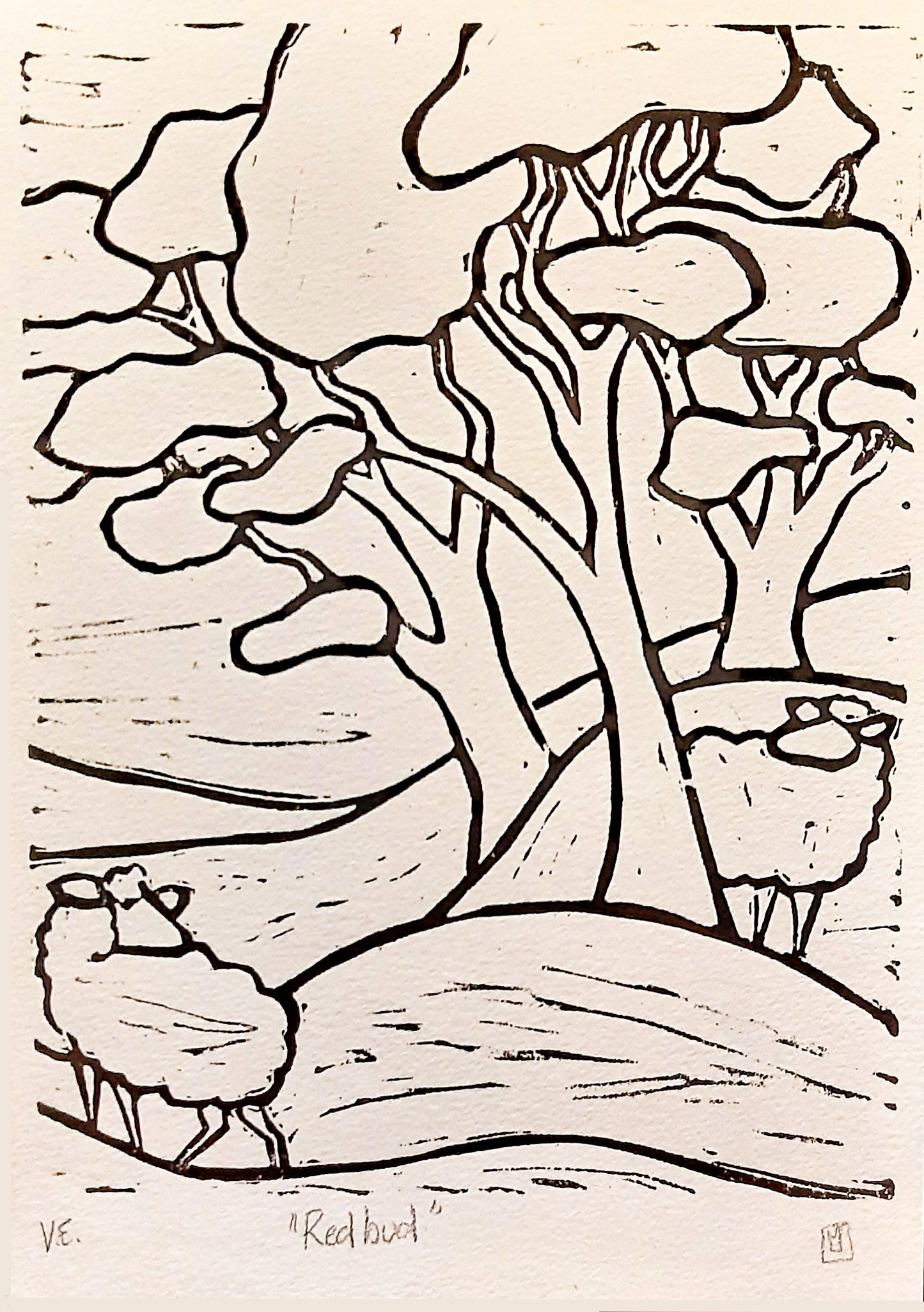All Sorts Acres Farm
Sheep and Eastern Red Bud Tree- Help us plant living fences
Sheep and Eastern Red Bud Tree- Help us plant living fences
Couldn't load pickup availability
A living fence is the deliberate planting of trees at the edge of livestock pasture. These fences are intensively managed for both forest products and forage, providing both short- and long-term income sources. They also provide much needed wind mitigation, wildlife habitat and natural corridors for other living creatures. Hedgerow species can be similar, if not the same as many silvopasture species making our future hedgerows a nursery for future silvopastures. Species chosen will be native to Ontario and beneficial to people, animals, and the ecosystem.
An original, black and white open edition created and hand-pulled print by Jennifer. Mounted on an 8x10 backing board.
This small Carolinian tree grows in the shade of larger trees. True to its name, it has beautiful pinkish blossoms in spring. Grey County is outside its normal range, but it can thrive in a protected location. This tree is an excellent, compact tree for multi-season interest and adaptability. In Spring will produce white and then berries in June that the birds will relish. Drought-tolerant and grows in both sun and shade. Height to 8m. The flower clusters, which are borne along the stems, are rich in both nectar and pollen, thus providing a valuable food source for early bees at a time when food is scarce. Bees that visit these flowers include honeybees, bumblebees, mason bees, cuckoo bees, long-horned bees, mining bees, and sweat bees. Redbuds are also host plants for the larvae of several butterflies and moths. Blossoms also attract hummingbirds. Cardinals and grosbeaks eat its seeds.
Materials
Materials
Dimensions
Dimensions
Care information
Care information




